Notebook - June 9, 1999
Reflections on race and culture
in McCosh 50
Hip-hop comes to Princeton
 Brigitte White '00 didn't break a sweat when the microphone stopped
working in the middle of her opening remarks. And she kept smiling even
when someone interrupted in midsentence to correct her terminology. After
a year spent organizing this conference on hip-hop culture, she knew exactly
what she wanted to say. Some 300 people attended the event, held on the
rainy Friday afternoon April 9. Entitled "Bridging Education and Entertainment:
Empowering the Hip-Hop Generation," it was cosponsored by the African-American
Studies program and the Nubian Rhapsody Group, a student organization.
Brigitte White '00 didn't break a sweat when the microphone stopped
working in the middle of her opening remarks. And she kept smiling even
when someone interrupted in midsentence to correct her terminology. After
a year spent organizing this conference on hip-hop culture, she knew exactly
what she wanted to say. Some 300 people attended the event, held on the
rainy Friday afternoon April 9. Entitled "Bridging Education and Entertainment:
Empowering the Hip-Hop Generation," it was cosponsored by the African-American
Studies program and the Nubian Rhapsody Group, a student organization.
Dressed conservatively in a black suit, White -- a Philadelphia native
and Woodrow Wilson School major who conceived and organized the conference
-- faced the audience of break dancers in baggy pants and aspiring rappers
in baseball caps, not to mention students and professors from Princeton
and elsewhere. Alternating between an academic and an informal tone, White
asserted, "Hip-hop is fueled by the same energy that started the civil
rights movement." The audience murmured words of encouragement. Wood-paneled,
tradition-steeped McCosh 50 felt more like a gospel-style church than a
Princeton lecture hall.
Hip-hop is more than a style of music. Since its inception in the late
1970s, hip-hop's triad of rap, dance, and graffiti has articulated the rage,
fears, and hopes of urban youth. It is arguably black America's most dynamic
vehicle for open reflection on race, culture, and identity -- on life on
the margins of society. Today, hip-hop has grown into a billion-dollar industry,
its vernacular, style, and music packaged by Madison Avenue and MTV for
the consumption of white suburban youth. Created by the same diasporic African-American
culture that invented jazz and blues, hip-hop is an artistic and political
movement shaped by the social and economic forces at work in contemporary
America. As White puts it, "Hip-hop is a culture that can be studied."
A considerable body of academic work has already been done on rap music
and hip-hop culture in fields as varied as anthropology, history, sociology,
and politics. Harvard has hosted three conferences on the subject.
The daylong event at Princeton began with a movie and slide presentation
on hip-hop's visual medium, graffiti art. Alain "Ket" Maridueña,
publisher of Stress magazine, spoke of the graffiti movement that
began in the late 1970s, when squads of urban youth took on the New York
cityscape as their canvas. In the dimly lit lecture hall, he showed slides
and explained the images. But unlike the other art-history lectures on classical
painting and sculpture that have been held in this room over the years,
this one focused on the resistance ethic of vandalism, on stolen spray paint,
on art emblazoned on subway cars, and on writers marking the urban society
that had marginalized them. Maridueña remembered going to school
every day in the Bronx and seeing the painted elevated trains passing before
him: "There is something about seeing a piece of art, moving fast or
slow in front of you. Graffiti was about putting art in a place that could
be seen by all -- on the L or the R line, not in a museum."
The second part of the conference was a panel discussion on using hip-hop
culture and industry to educate and empower African Americans. Before the
discussion began, William Perkins, a professor at the University of Pennsylvania,
asked the audience to stand up and join hands. Taking a bottle of Princeton
spring water from the table, the dreadlocked professor poured what he called
"a libation" on the wood floor. Drawing shapes with the stream
of falling water, Perkins intoned, "A circle because it is eternal
and never ends. A cross because we are a people at a crossroads." Shouts
and calls from the audience echoed. Perkins, using a mixture of slang, academic
jargon, rhymes, and jokes, set the tone for a lively discussion by proclaiming:
"All black people have is their culture. Our culture is not for sale...
I'm the rap scholar, tryin' to make a dollar, gonna make you holler."
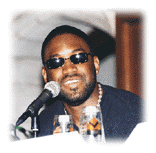 What followed was a three-hour-long, raucous conversation (sometimes
bordering on the argumentative) between the panelists and the audience.
Bahamadia, a rap artist and radio personality, and Omeyele McIntosh, who
works at Rock-a-fella Records, remarked on the prevailing sexism of the
hip-hop industry. Selwyn Seyfu Hinds '93 (shown, left), editor of Source
magazine, called hip-hop a "bedrock of opportunity" for young
African Americans, urging them to find jobs and work their way up in the
industry. Some of the afternoon's most insightful and articulate comments
came from Common, a young rap artist from Chicago who has just put out his
third album, One day it'll all make sense. Referring to the African
roots of drumming and speech over music, Common said he saw music and culture
as a "way to send messages." When asked about a song on his album
that features his father, Common replied that hip-hop acted as a bridge
between generations, allowing him to build and deepen his relationship with
his father.
What followed was a three-hour-long, raucous conversation (sometimes
bordering on the argumentative) between the panelists and the audience.
Bahamadia, a rap artist and radio personality, and Omeyele McIntosh, who
works at Rock-a-fella Records, remarked on the prevailing sexism of the
hip-hop industry. Selwyn Seyfu Hinds '93 (shown, left), editor of Source
magazine, called hip-hop a "bedrock of opportunity" for young
African Americans, urging them to find jobs and work their way up in the
industry. Some of the afternoon's most insightful and articulate comments
came from Common, a young rap artist from Chicago who has just put out his
third album, One day it'll all make sense. Referring to the African
roots of drumming and speech over music, Common said he saw music and culture
as a "way to send messages." When asked about a song on his album
that features his father, Common replied that hip-hop acted as a bridge
between generations, allowing him to build and deepen his relationship with
his father.
At Princeton, hip-hop music blares out of dormitory windows and eating
clubs. On this predominantly white campus, hip-hop music is consumed by
the majority as a commercial product, as background noise, as something
to dance to. The conference returned the music to its cultural context by
making the casual listener think about where it came from and what inspired
it. Too often at Princeton, minorities and white students do not interact.
Although it may be naive to think so, it is possible that hip-hop could
provide some sort of common ground. The sanitized, shrink-wrapped hip-hop
CDs put out by major record labels and purchased by white kids do not constitute
cultural exchange. But sitting in a packed lecture hall, listening to a
heated discussion about the history of the hip-hop movement and the possibility
of using it to address inequality, does. As one panelist, alumnus Selwyn
Hinds, remarked: "A conference like this would not have been possible
here 10 years ago. We have come a long way."
-- Leila Abboud '99
Schools and the
American Dream
 Work hard, play by the rules, and success will be yours -- this distillation
of the American Dream entices our consciousness regardless of social or
economic status, along with its corollary: A decent education is the ticket
to a better future. But pinning down the particulars of how to make the
dream a reality and what constitutes a decent education amounts to a Gordian
knot, as students in the freshman seminar The American Dream and the Public
Schools discovered this spring.
Work hard, play by the rules, and success will be yours -- this distillation
of the American Dream entices our consciousness regardless of social or
economic status, along with its corollary: A decent education is the ticket
to a better future. But pinning down the particulars of how to make the
dream a reality and what constitutes a decent education amounts to a Gordian
knot, as students in the freshman seminar The American Dream and the Public
Schools discovered this spring.
At a recent session, 12 freshmen gathered in Madison Hall to tackle the
idea of tracking -- the system schools use to group students with others
of similar academic ability. It helped some of these students get to where
they are now, but what did they lose out on -- and what did their classmates,
not given the option of taking their challenging courses, miss?
"Heterogeneous grouping doesn't work. The class will sort itself
out anyway, and the top-achieving kid always ends up doing all the work,"
states Elizabeth Greenberg '02. "But I don't lose out as a top learner
because I can learn it well enough to explain it to someone else,"
counters Adrian Rosales '02. "Tracking might work for math and science,"
suggests Kate Serafini '02. "I hated math, and wasn't really good at
it. So I didn't want to be with kids who were really good at it."
Guiding the discussion is Nathan B. Scovronick, a lecturer in public
and international affairs, who interjects, "We have some evidence that
you would do OK." Studies show that tracking hurts many students, he
adds, and that students at the top do just as well in properly taught mixed-ability
classrooms.
This is the one session in Scovronick's seminar in which students rely
more heavily on personal experience than on their readings, which include
chapters of books by Jonathan Kozol, Jeffrey Henig, and Howard Gardner,
supplemented by 200 pages of edited court decisions. One of the course's
principal texts is the essay "Race, Class and the Soul of a Nation,"
by Professor of Politics and Public Affairs Jennifer L. Hochschild, who
is collaborating with Scovronick on a book on education policy. Other topics
the class covers range from school desegregation and equal funding to school
choice and educational reform. Students wrestle with questions that include
what services should be provided to immigrants, what level of racial segregation
should be tolerated, and how much should be spent on public education.
Since all the students have their own school experience to weigh against
the readings, Scovronick's job is to show that anecdotes aren't evidence,
that opinions are just opinions, and that respect is needed for the social-science
evidence. The problem, he says, is that studies examining these types of
issues in education aren't always definitive. Also, there is a plethora
of opinions from different groups with their own agendas on how schools
should be reformed. In class, "we discuss what to do in these circumstances,
and how policy makers sometimes make decisions based on ideology or values.
There are no solutions to these issues -- policy makers are just trying
to do the best they can."
Scovronick has his own personal experience to bring to the discussion;
he was executive director of New Jersey's Department of the Treasury before
coming to the university six years ago (he has directed the Woodrow Wilson
School's undergraduate program for the last four). Before his treasury post,
he served as policy director of the state's General Assembly and staff director
for the state senate's Committee on Education and Higher Education. When
the students discussed school funding, among three court cases considered
was New Jersey's Abbot v. Burke, which was brought to secure equal
education funding for students in the state's poor urban districts. Scovronick
helped compose the state's initial response to the case, the Quality Education
Act I, when he was with New Jersey's Treasury Department.
"The seminar has done an excellent job of explaining the realities
and the complex issues of education. The use of court cases has been one
of the most interesting parts -- they made the issues more real," says
Serafini. Rel Lavizzo-Mourey '02 says she has learned "a lot about
the politics of school reform, and why it is so difficult to accomplish.
I have really enjoyed having to think about how I would go about changing
a system that has so many problems."
-- Maria LoBiondo
Trustees promote eight to tenure
At their April 9 meeting, the trustees promoted eight faculty members
to the tenured position of associate professor: Albert S. Bendelac (molecular
biology), Edward W. Felten (computer science), Olga P. Hasty (Slavic languages
and literatures), David L. Howell *89 (East Asian studies and history),
Naomi E. Leonard '85 (mechanical and aerospace engineering), Jaswinder P.
Singh '87 (computer science), Sandra M. Troian (chemical engineering), and
Christian Wildberg (classics).
Bendelac studies a type of immune cell called T lymphocytes and is interested
in why these cells develop into certain subsets. As part of this work, he
is describing entirely new modes by which the immune system recognizes antigens,
the bits and pieces of invading organisms that trigger immune responses.
Bendelac, who received his Ph.D. from the Université Paris-VII in
1992, is also a medical doctor. He came to Princeton in 1994.
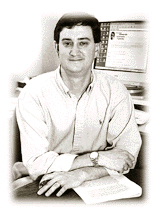 Felten's research focuses on computer security, particularly having
to do with the World Wide Web. An assistant professor since 1993, he is
director of the university's Secure Internet Programming Lab. Felten has
identified security flaws in Internet software. This past year, he testified
for the U.S. Department of Justice in its antitrust suit against Microsoft.
Felten received his Ph.D. in computer science and engineering from the University
of Washington in 1993.
Felten's research focuses on computer security, particularly having
to do with the World Wide Web. An assistant professor since 1993, he is
director of the university's Secure Internet Programming Lab. Felten has
identified security flaws in Internet software. This past year, he testified
for the U.S. Department of Justice in its antitrust suit against Microsoft.
Felten received his Ph.D. in computer science and engineering from the University
of Washington in 1993.
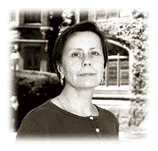 Hasty focuses on Russian 19th-century poetry and post-Symbolist poetry.
She also has interests in Formalism, the Russian avant-garde, Nabokov and
émigré literature, Russian drama, and Russian women writers.
Hasty earned her Ph.D. at Yale in 1980. She taught at Dickinson College
and Trinity College and was a lecturer at the University of Pennsylvania
for four years before coming to Princeton in 1993.
Hasty focuses on Russian 19th-century poetry and post-Symbolist poetry.
She also has interests in Formalism, the Russian avant-garde, Nabokov and
émigré literature, Russian drama, and Russian women writers.
Hasty earned her Ph.D. at Yale in 1980. She taught at Dickinson College
and Trinity College and was a lecturer at the University of Pennsylvania
for four years before coming to Princeton in 1993.
 Howell specializes in the social and economic history of Japan during
the Tokugawa and Meiji periods (1600-1890). His current projects include
a book on social disorder and intellectual entrepreneurship in the 19th
century. Howell received his Ph.D. in history from Princeton in 1989 and
returned to the university as assistant professor in 1993.
Howell specializes in the social and economic history of Japan during
the Tokugawa and Meiji periods (1600-1890). His current projects include
a book on social disorder and intellectual entrepreneurship in the 19th
century. Howell received his Ph.D. in history from Princeton in 1989 and
returned to the university as assistant professor in 1993.
 Leonard's research focuses on the automation of mechanical systems
using nonlinear and geometric methods, "work that lies at the intersection
of the fields of mechanics and control," she says, "with applications
to problems in robotics, manufacturing, transportation, medical systems,
and others." In 1994, Leonard earned her Ph.D. from the University
of Maryland before being appointed assistant professor of MAE at Princeton.
Leonard's research focuses on the automation of mechanical systems
using nonlinear and geometric methods, "work that lies at the intersection
of the fields of mechanics and control," she says, "with applications
to problems in robotics, manufacturing, transportation, medical systems,
and others." In 1994, Leonard earned her Ph.D. from the University
of Maryland before being appointed assistant professor of MAE at Princeton.
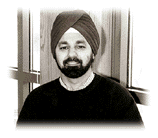 Singh's primary area of research is applications and systems for
parallel computing, the technique of using multiple computers together to
solve complex problems. He also has developed computational methods for
biological applications, including protein structure determination in the
presence of uncertainty and probabilistic inference for disease diagnosis.
Singh earned his Ph.D. in 1993 at Stanford and returned to Princeton in
1995.
Singh's primary area of research is applications and systems for
parallel computing, the technique of using multiple computers together to
solve complex problems. He also has developed computational methods for
biological applications, including protein structure determination in the
presence of uncertainty and probabilistic inference for disease diagnosis.
Singh earned his Ph.D. in 1993 at Stanford and returned to Princeton in
1995.
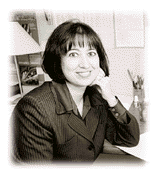 Troian studies the hydrodynamic behavior of liquid films in free
and confined geometries. She has researched the mechanisms responsible for
several instabilities that compromise heat and mass transfer along interfaces.
Her work has practical applications to microfluidics and the delivery of
lung surfactant in airways. Troian received her Ph.D. in condensed matter
theory from Cornell University in 1987 and was a senior physicist at Exxon
before joining Princeton in 1993.
Troian studies the hydrodynamic behavior of liquid films in free
and confined geometries. She has researched the mechanisms responsible for
several instabilities that compromise heat and mass transfer along interfaces.
Her work has practical applications to microfluidics and the delivery of
lung surfactant in airways. Troian received her Ph.D. in condensed matter
theory from Cornell University in 1987 and was a senior physicist at Exxon
before joining Princeton in 1993.
Wildberg's interests include classical philosophy (especially Neoplatonism,
Plato, and Aristotle), Christian intellectual history of the 5th century
b.c.e., ancient science and cosmology, and ancient Greek religion. Among
his projects in progress is a translation and commentary on Aristotle's
De Caelo. Wildberg, who earned his Ph.D. at Cambridge University
in 1984, joined the faculty in 1996 and is currently director of graduate
studies in classics.
In brief
Award for PAW: The Princeton Alumni Weekly won a bronze medal
for staff writing from The Council for the Advancement and Support of Education
for articles written during the last year by Wes Tooke '98 and Kathryn Federici
Greenwood. CASE annually honors institutions and professionals involved
in educational communications, including alumni magazines. PAW was one of
47 entries in the staff-writing category for alumni magazines.
All that Jazz: The Monk/Mingus Ensemble under the direction of Anthony
D.J. Branker '80, a lecturer in music, has been named cowinner of the award
for Best Jazz Instrumental Group, college division, in the annual Down
Beat magazine Student Music Awards. The members of the ensemble include
Eli Asher '00, Charles Baxter '01, Daniel Weiss '01, Vivek Mathew '99, Marissa
Steingold '98, Jason Widman, and graduate students Julian Rosse and Jeff
Viaclovsky.
CEOR splits: The trustees have voted to split the Department of Civil
Engineering and Operations Research into two departments. One will be called
Civil and Environmental Engineering, and the other will be Operations Research
and Financial Engineering. Operations research is a discipline that uses
the mathematical techniques of engineering to solve problems in business
and industry, such as scheduling a production line. The independent designation
should allow the two departments to recruit more specialized faculty.
Library consortium: The New York Public Library, Columbia University,
and Princeton will build and share a high-tech, automated book storage facility
to house millions of their infrequently used volumes. The facility is expected
to be located at the university's James Forrestal Campus, in Plainsboro,
New Jersey. Infrequently used collections of books and scholarly journals
of all three institutions will be moved to remote storage and will be available
within 24 hours of a reader's request, alleviating storage problems.
Story 5 Title
Subtitle
Story 5 body
Story 6 Title
Subtitle
Story 6 body
Story 7 Title
Subtitle
Story 7 body
Story 8 title
Subtitle
Story 8 body
Story 9 Title
Subtitle
Story 9 body
Story 10 title
Subtitle
Story 10 body
GO TO
the Table of Contents of the current issue
GO TO PAW's
home page
paw@princeton.edu
 Brigitte White '00 didn't break a sweat when the microphone stopped
working in the middle of her opening remarks. And she kept smiling even
when someone interrupted in midsentence to correct her terminology. After
a year spent organizing this conference on hip-hop culture, she knew exactly
what she wanted to say. Some 300 people attended the event, held on the
rainy Friday afternoon April 9. Entitled "Bridging Education and Entertainment:
Empowering the Hip-Hop Generation," it was cosponsored by the African-American
Studies program and the Nubian Rhapsody Group, a student organization.
Brigitte White '00 didn't break a sweat when the microphone stopped
working in the middle of her opening remarks. And she kept smiling even
when someone interrupted in midsentence to correct her terminology. After
a year spent organizing this conference on hip-hop culture, she knew exactly
what she wanted to say. Some 300 people attended the event, held on the
rainy Friday afternoon April 9. Entitled "Bridging Education and Entertainment:
Empowering the Hip-Hop Generation," it was cosponsored by the African-American
Studies program and the Nubian Rhapsody Group, a student organization. What followed was a three-hour-long, raucous conversation (sometimes
bordering on the argumentative) between the panelists and the audience.
Bahamadia, a rap artist and radio personality, and Omeyele McIntosh, who
works at Rock-a-fella Records, remarked on the prevailing sexism of the
hip-hop industry. Selwyn Seyfu Hinds '93 (shown, left), editor of Source
magazine, called hip-hop a "bedrock of opportunity" for young
African Americans, urging them to find jobs and work their way up in the
industry. Some of the afternoon's most insightful and articulate comments
came from Common, a young rap artist from Chicago who has just put out his
third album, One day it'll all make sense. Referring to the African
roots of drumming and speech over music, Common said he saw music and culture
as a "way to send messages." When asked about a song on his album
that features his father, Common replied that hip-hop acted as a bridge
between generations, allowing him to build and deepen his relationship with
his father.
What followed was a three-hour-long, raucous conversation (sometimes
bordering on the argumentative) between the panelists and the audience.
Bahamadia, a rap artist and radio personality, and Omeyele McIntosh, who
works at Rock-a-fella Records, remarked on the prevailing sexism of the
hip-hop industry. Selwyn Seyfu Hinds '93 (shown, left), editor of Source
magazine, called hip-hop a "bedrock of opportunity" for young
African Americans, urging them to find jobs and work their way up in the
industry. Some of the afternoon's most insightful and articulate comments
came from Common, a young rap artist from Chicago who has just put out his
third album, One day it'll all make sense. Referring to the African
roots of drumming and speech over music, Common said he saw music and culture
as a "way to send messages." When asked about a song on his album
that features his father, Common replied that hip-hop acted as a bridge
between generations, allowing him to build and deepen his relationship with
his father. Work hard, play by the rules, and success will be yours -- this distillation
of the American Dream entices our consciousness regardless of social or
economic status, along with its corollary: A decent education is the ticket
to a better future. But pinning down the particulars of how to make the
dream a reality and what constitutes a decent education amounts to a Gordian
knot, as students in the freshman seminar The American Dream and the Public
Schools discovered this spring.
Work hard, play by the rules, and success will be yours -- this distillation
of the American Dream entices our consciousness regardless of social or
economic status, along with its corollary: A decent education is the ticket
to a better future. But pinning down the particulars of how to make the
dream a reality and what constitutes a decent education amounts to a Gordian
knot, as students in the freshman seminar The American Dream and the Public
Schools discovered this spring. Felten's research focuses on computer security, particularly having
to do with the World Wide Web. An assistant professor since 1993, he is
director of the university's Secure Internet Programming Lab. Felten has
identified security flaws in Internet software. This past year, he testified
for the U.S. Department of Justice in its antitrust suit against Microsoft.
Felten received his Ph.D. in computer science and engineering from the University
of Washington in 1993.
Felten's research focuses on computer security, particularly having
to do with the World Wide Web. An assistant professor since 1993, he is
director of the university's Secure Internet Programming Lab. Felten has
identified security flaws in Internet software. This past year, he testified
for the U.S. Department of Justice in its antitrust suit against Microsoft.
Felten received his Ph.D. in computer science and engineering from the University
of Washington in 1993. Hasty focuses on Russian 19th-century poetry and post-Symbolist poetry.
She also has interests in Formalism, the Russian avant-garde, Nabokov and
émigré literature, Russian drama, and Russian women writers.
Hasty earned her Ph.D. at Yale in 1980. She taught at Dickinson College
and Trinity College and was a lecturer at the University of Pennsylvania
for four years before coming to Princeton in 1993.
Hasty focuses on Russian 19th-century poetry and post-Symbolist poetry.
She also has interests in Formalism, the Russian avant-garde, Nabokov and
émigré literature, Russian drama, and Russian women writers.
Hasty earned her Ph.D. at Yale in 1980. She taught at Dickinson College
and Trinity College and was a lecturer at the University of Pennsylvania
for four years before coming to Princeton in 1993. Howell specializes in the social and economic history of Japan during
the Tokugawa and Meiji periods (1600-1890). His current projects include
a book on social disorder and intellectual entrepreneurship in the 19th
century. Howell received his Ph.D. in history from Princeton in 1989 and
returned to the university as assistant professor in 1993.
Howell specializes in the social and economic history of Japan during
the Tokugawa and Meiji periods (1600-1890). His current projects include
a book on social disorder and intellectual entrepreneurship in the 19th
century. Howell received his Ph.D. in history from Princeton in 1989 and
returned to the university as assistant professor in 1993. Leonard's research focuses on the automation of mechanical systems
using nonlinear and geometric methods, "work that lies at the intersection
of the fields of mechanics and control," she says, "with applications
to problems in robotics, manufacturing, transportation, medical systems,
and others." In 1994, Leonard earned her Ph.D. from the University
of Maryland before being appointed assistant professor of MAE at Princeton.
Leonard's research focuses on the automation of mechanical systems
using nonlinear and geometric methods, "work that lies at the intersection
of the fields of mechanics and control," she says, "with applications
to problems in robotics, manufacturing, transportation, medical systems,
and others." In 1994, Leonard earned her Ph.D. from the University
of Maryland before being appointed assistant professor of MAE at Princeton. Singh's primary area of research is applications and systems for
parallel computing, the technique of using multiple computers together to
solve complex problems. He also has developed computational methods for
biological applications, including protein structure determination in the
presence of uncertainty and probabilistic inference for disease diagnosis.
Singh earned his Ph.D. in 1993 at Stanford and returned to Princeton in
1995.
Singh's primary area of research is applications and systems for
parallel computing, the technique of using multiple computers together to
solve complex problems. He also has developed computational methods for
biological applications, including protein structure determination in the
presence of uncertainty and probabilistic inference for disease diagnosis.
Singh earned his Ph.D. in 1993 at Stanford and returned to Princeton in
1995. Troian studies the hydrodynamic behavior of liquid films in free
and confined geometries. She has researched the mechanisms responsible for
several instabilities that compromise heat and mass transfer along interfaces.
Her work has practical applications to microfluidics and the delivery of
lung surfactant in airways. Troian received her Ph.D. in condensed matter
theory from Cornell University in 1987 and was a senior physicist at Exxon
before joining Princeton in 1993.
Troian studies the hydrodynamic behavior of liquid films in free
and confined geometries. She has researched the mechanisms responsible for
several instabilities that compromise heat and mass transfer along interfaces.
Her work has practical applications to microfluidics and the delivery of
lung surfactant in airways. Troian received her Ph.D. in condensed matter
theory from Cornell University in 1987 and was a senior physicist at Exxon
before joining Princeton in 1993.